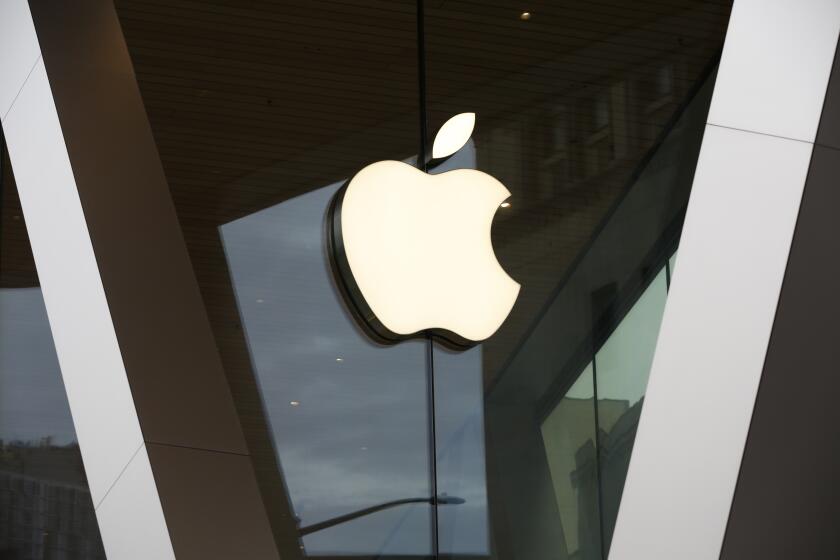Are We Ready for Pain of Another Wave of Change?
- Share via
All those in favor of another big round of creative destruction, say aye.
Say what?
Creative destruction, a term coined by an Austrian economist named Joseph Schumpeter who died in 1950, has been the guiding force of the U.S. economy virtually since its inception, and especially in the last 10 years.
Simply put, Schumpeter’s concept holds that true capitalism is marked by a “perennial gale of creative destruction” in which old ideas and weak competitors are continually swept away by new ideas and stronger competitors.
“Unlike other economic systems, the capitalist system is geared to incessant change,” Schumpeter said.
And so it was that the U.S. economy remade itself in the 1990s, in the process replacing a mood of widespread gloom at the start of the decade--remember the bemoaning of the “jobless recovery”?--with a sense of triumph by the late 1990s, as growth soared, unemployment plunged and inflation remained the dog that didn’t bark.
Oh yes, and along the way, some people made a bit of money in a stock market that seemed to like what it saw.
Now we appear to be in the midst of another major wave of change. The stock market’s performance in 2000--with the Nasdaq composite index plunging a record 39.3% and the Standard & Poor’s 500 index losing 10.1%, the worst calendar-year decline since 1977--is both an aspect of that change and a foreshadowing of more to come for many industries and companies.
What the nation has savored in the last few years has been the first element of Schumpeter’s model: the creation of exciting technologies, thousands of new companies, millions of jobs.
All but forgotten is how much destruction occurred, particularly at the start of the decade, as many U.S. companies launched brutal restructurings that pared costs and jettisoned workers.
The economy was well out of recession by mid-1991, but the unemployment rate continued to surge, peaking at 7.8% in mid-1992.
Corporate write-offs for division closings, layoffs and the revaluation of assets reached nearly 28% of the total operating earnings reported by the blue-chip S&P; 500 companies in 1991. In other words, those companies earned the equivalent of $22.20 per S&P; share in 1991 from their operations--but had to reduce that by $6.29 a share to account for write-offs.
Huge write-offs continued in 1992 and 1993, even as companies’ operating results began to reap the benefits of the restructuring wave.
*
Today the U.S. unemployment rate is about half its 1992 peak. But now, all around us, layoff notices are piling up once again. As the economy slows, old-line companies from Aetna to Union Pacific to General Motors are turning to destruction of jobs and business models in the name of recreating themselves as more competitive, and profitable, enterprises.
Many new-economy companies find themselves in the same boat. Microsoft told employees several weeks ago that cost-cutting will be accelerated in 2001. Charles Schwab is slashing some executive salaries and asking workers to take unpaid leave to reduce costs.
And for a growing list of “dot-com” companies, creativity has been followed by complete destruction: They have been terminated.
Creative destruction is hardly a new idea in Silicon Valley, of course. The technology sector has been a principal agent behind much of the creative destruction in the economy as a whole over the last decade. Tech entrepreneurs know all too well that the speed of change in their business means that predators quickly become prey.
But that fact of life seemed to have been forgotten by too many investors early this year, as they paid astounding prices to own a share of the technology revolution.
More than a few investors wondered in the spring and late summer why tech stock prices were being hammered down, when the companies were reporting stellar sales and earnings growth. The short answer is that the market was looking ahead, as it usually does. On some level, the market clearly foresaw the sales and earnings slowdown that has hit many tech companies in the current quarter.
For all the talk of the sudden turnabout in the business outlook, the most serious destruction in the U.S. economy so far hasn’t been in jobs. The major destruction has occurred in the stock market values of technology leaders, in the credibility of management at such former corporate stars as Lucent Technologies and in investors’ sentiment on the market.
The issue now is what the destruction in those areas will beget in terms of tangible damage to the economy.
It comes down to this: What will companies decide they must do to make Wall Street love them, and their stocks, again? (And Wall Street, don’t forget, means many of us, the record number of individual U.S. shareholders.)
If the global economy is indeed slowing markedly, then sales growth will become much more of a challenge for every company. How much restructuring and work-force paring will U.S. companies decide they must do to either keep earnings on track or restore growth that has flagged?
In the name of future profitability, companies inflicted significant pain on themselves and the American worker’s psyche in the early 1990s. Are we, as a nation, ready to deal with another wave of change on that scale?
Schumpeter would say that a truly capitalist society has no choice. And America, of all places capitalist, has accepted creative destruction, even embraced it, for most of its history.
Albert Einstein, speaking about technological change, said it was like “an ax in the hands of a pathological criminal.”
Are we ready?
*
Tom Petruno can be reached at tom.petruno@latimes.com. For recent columns on the Web, go to http://161.35.110.226/petruno.
(BEGIN TEXT OF INFOBOX / INFOGRAPHIC)
The Challenge: Earnings Growth
The stock market’s stellar performance in the 1990s was rooted in the sharp growth of corporate earnings. Earnings boomed early in the decade thanks to heavy corporate cost-cutting and later thanks to strong economic growth. Growth stalled in 1998 because of fallout from the Asian and Russian economic crises.
*
Operating earnings per share for the Standard & Poor’s 500 companies
2000: $56.00*
* Estimate
Source: Goldman, Sachs & Co.
(BEGIN TEXT OF INFOBOX / INFOGRAPHIC)
The Market Thinks Again
Early in the year, at least one Wall Street analyst was so enamored of technology that he predicted Cisco Systems would become the market’s first $1-trillion company, as measured by market value (stock price times number of shares outstanding). But Cisco never got close. Instead, the market has dramatically pared the values of all major tech companies. A sampling:
*--*
Market value Current Fri. at peak value Pctg. stock Company (billions) (blns.) drop close Nokia $291 $204 -30% $43.50 Oracle 258 163 -37 29.06 Cisco Systems 576 275 -52 38.25 Qualcomm 132 62 -53 82.19 Intel 505 202 -60 30.06 Microsoft 629 231 -63 43.38 Dell Computer 150 45 -70 17.44 EBay 33 9 -73 33.00 Lucent Technol. 264 46 -83 13.50 Yahoo 140 17 -88 30.06
*--*
Source: Bloomberg News, Times research
More to Read
Inside the business of entertainment
The Wide Shot brings you news, analysis and insights on everything from streaming wars to production — and what it all means for the future.
You may occasionally receive promotional content from the Los Angeles Times.










